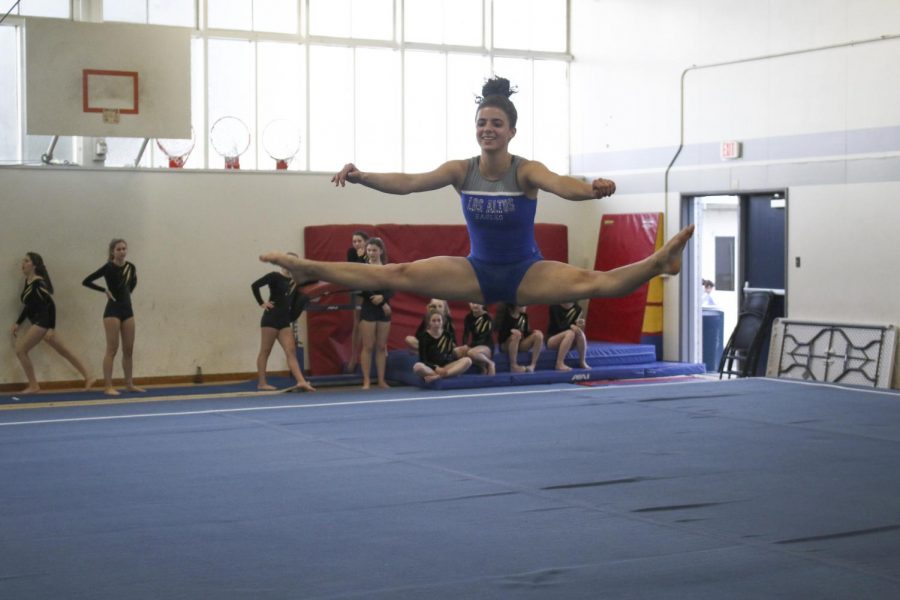Gymnastics: Reaching for the high bar together
April 24, 2018
Club gymnastics is cutthroat. Gymnasts spend upward of 20 hours a week at the gym, honing their skills to excel in competition — there’s little time to socialize. And this rigidity is necessary; competition is fierce, and coaches and gymnasts alike want to see each gymnast improve and compete at their highest caliber.
But the Los Altos varsity gymnastics team’s practices have a far more carefree, relaxed atmosphere. Practices are fun, not stressful. Coaches entrust varsity gymnasts with improving their own skills — they focus on teaching JV gymnasts. At practices, varsity gymnasts amicably chat and socialize, and at meets, they cheer each other on as they compete.
“[School gymnastics] is a different way to enjoy gymnastics without all the pressure of club,” sophomore Emma Tsao, who’s been a gymnast for 12 years, said.
In an otherwise individual sport, school gymnastics offers students the opportunity to work together and bond as a team to win meets against other schools. All members of the varsity team at Los Altos have trained or are currently training at Gold Star, so they’ve already spent hours in the gym together for several years.
Even during the school gymnastics season, they spend the majority of their afternoons training at their club gymnastics team. But after sophomore Kelli Kuramoto quit club gymnastics and focused solely on school gymnastics, she was able to train more with JV gymnasts and bond with them, bridging the gap between varsity and JV athletes.
And because there’s a wider range of skill levels at the high school level, Los Altos club gymnasts often find school gymnastics easier and handily secure first places — Los Altos won last Tuesday’s meet against four other schools. After competing in club gymnastics, making it on varsity is essentially a guarantee, even for gymnasts who no longer compete in club.
On the other hand, club gymnastics’ cutthroat environment often leads to injuries because of how physically taxing the sport is. Some end up quitting because of the time commitment and risk of injury. But for others who have trained for over a decade, like Emma, gymnastics is such a way of life that stopping the sport is inconceivable. And it has its perks, teaching competitors to toughen their bodies and minds.
“It’s really good on your mind to have constant reassurance that you can do the skills you’re doing and that you’ve been doing gymnastics for a long time,” sophomore Courtney Krauss said. “You have to stay confident, and it’s good for your mentality.”
“I think sports teach you hard work and determination and dealing with challenges like injuries or mental blocks,” Emma said. “That helps you overcome problems some people might give up, but I’d go to the gym and work on a skill.”
For many, school gym is a way to tap into those perks without the same level of physical exertion.
“I thought high school gym would be a fun way to still practice my skills,” sophomore Jennifer Kuramoto, who left Gold Star Gymnastics in seventh grade, said. “I did find [gymnastics] more attractive again, especially without all the pressure.”






